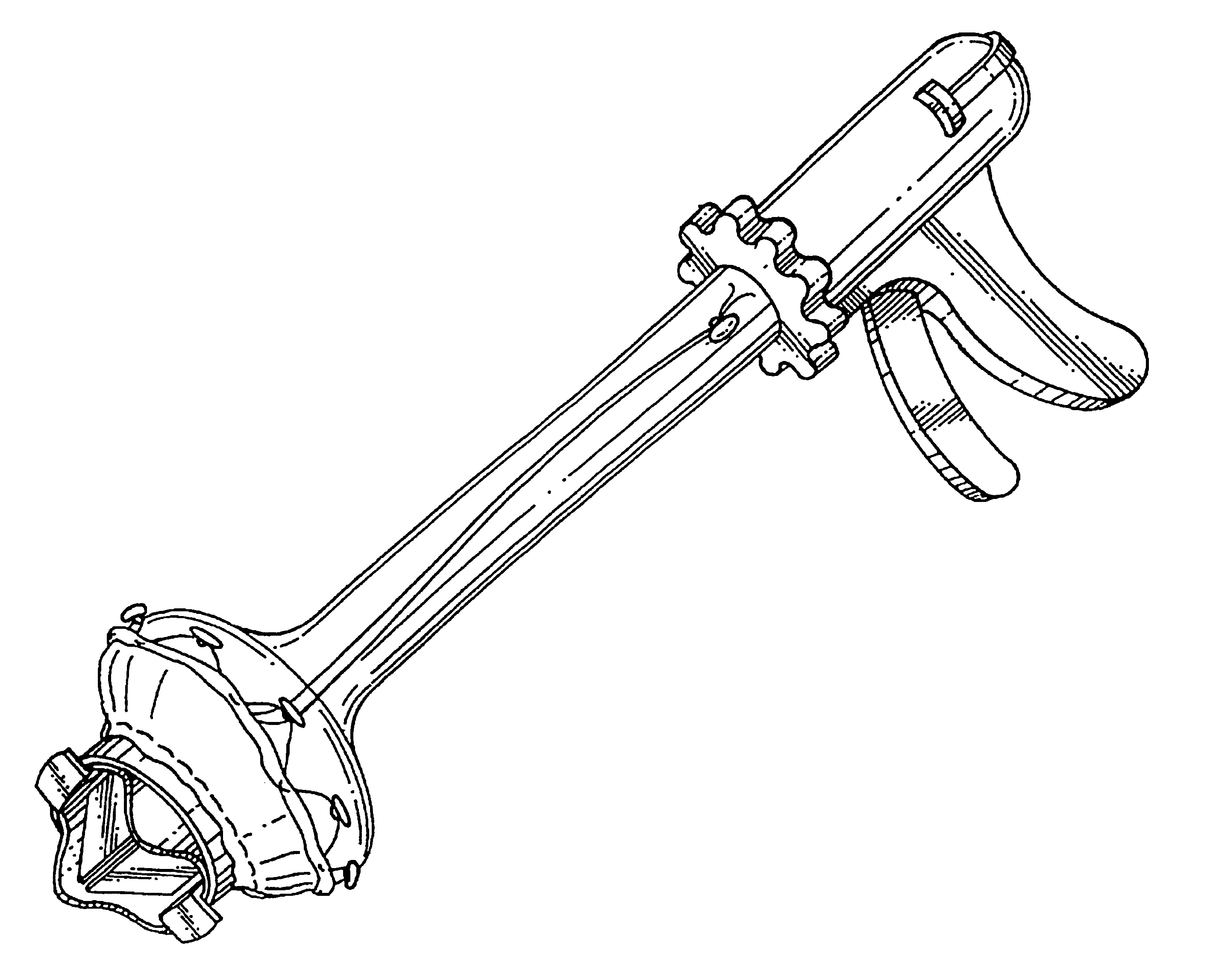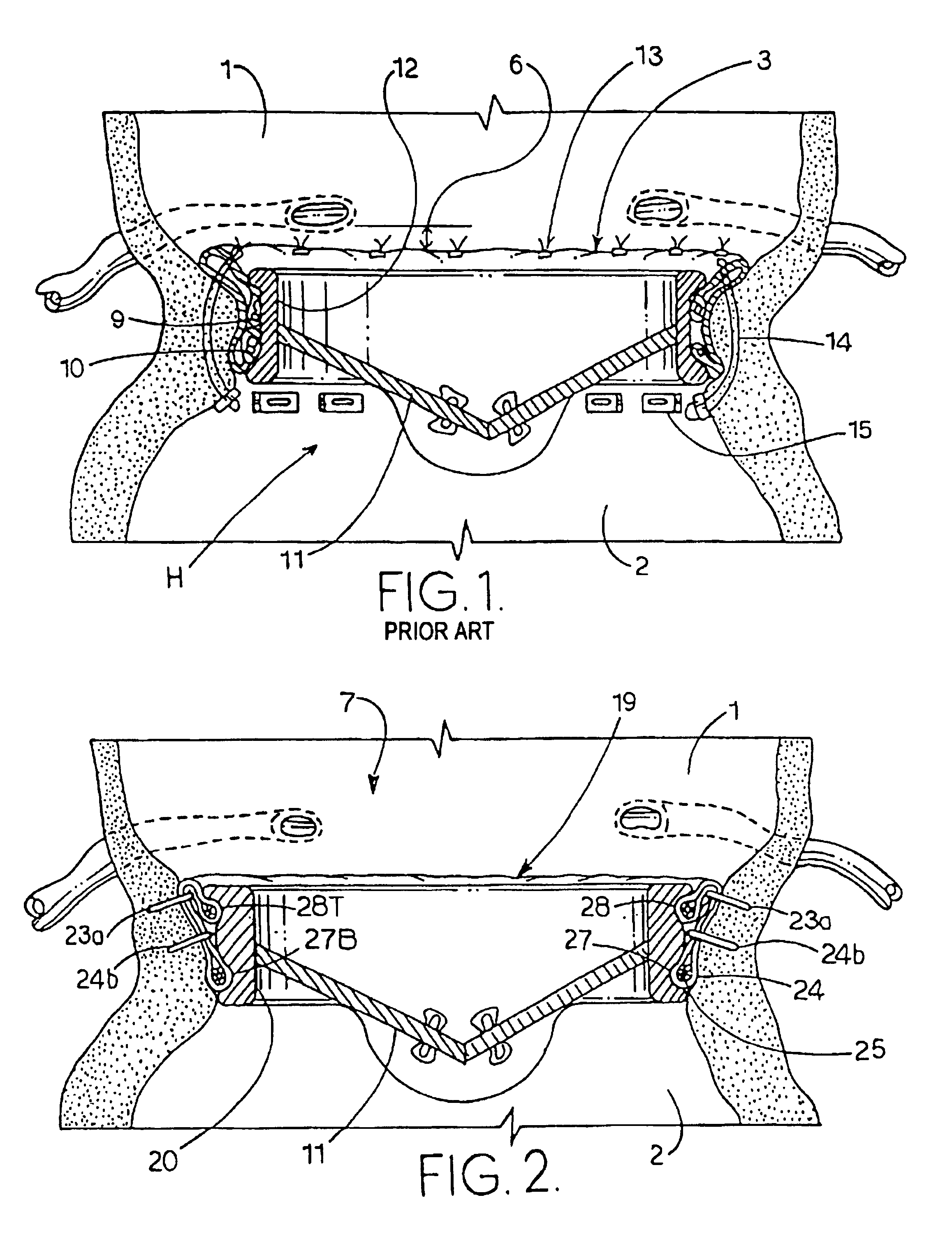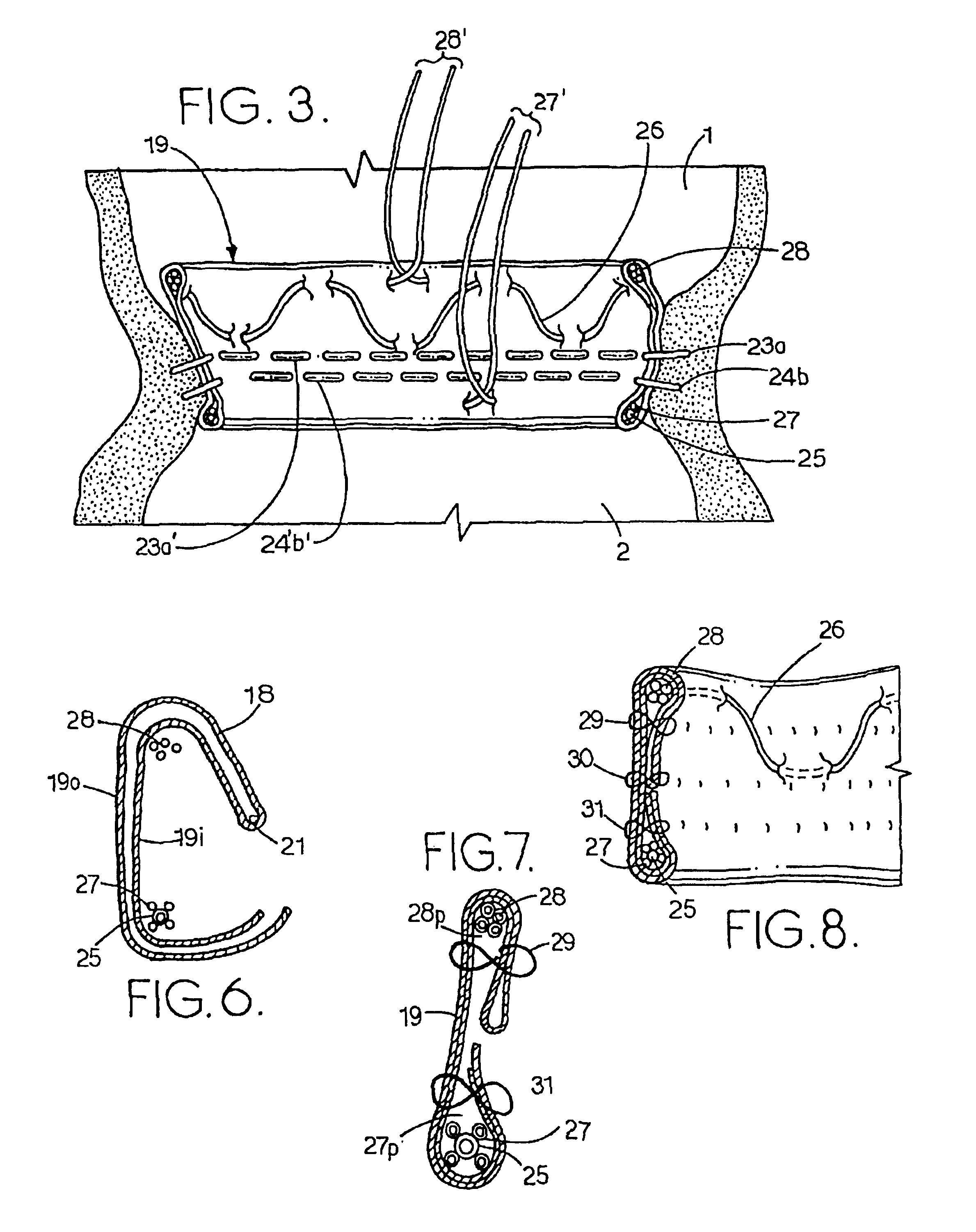The resulting defects in the valves hinder the
normal functioning of the atrioventricular orifices and operation of the heart.
More specifically, defects such as the narrowing of the valve
stenosis and / or the defective closing of the valve, referred to as valvular insufficiency, result in an accumulation of blood in a
heart cavity or regurgitation of blood past the valve.
If uncorrected, prolonged valvular
stenosis or insufficiency may cause damage to the heart
muscle, which may eventually necessitate total
valve replacement.
Moreover, they are lightweight, hard and quite strong.
As will be discussed below, even though this is a widely accepted valve, there are problems and drawbacks.
This procedure is very expensive.
While this procedure currently works very well,
operating time is still extensive and the longer the patient is on bypass equipment, the greater the risk to the patient.
Still further, many currently used surgical techniques are invasive and often require breaking of bones.
This increases the time and difficulty of the
recovery.
While this is a tedious procedure in an “open chest” case, it is very challenging to accomplish through any
small incision between the ribs or through a thoracic inlet, as would be required in any minimally
invasive procedure.
A further problem associated with suturing some prostheses is that the valve is bulky and reduces the inside
diameter of the valve body.
A reduced flow area for such a valve may adversely influence
blood flow characteristics associated with the valve, thereby adversely influencing the performance of the valve.
This is very counter-productive to the clinical needs of the
prosthesis.
It is very hard to develop a
mechanical valve that has the same flow characteristics of a living tissue valve.
Even the so-called sutureless valves that have been disclosed in the art may have this problem.
Housing attachment means within the valve base narrows the inside
diameter of the valve body thereby creating adverse flow characteristics.
Reduced flow area may also result in rapid blood acceleration with a concomitant risk of
red cell hemolysis and activation of sensitive
enzyme systems such as the clotting
system.
Yet a further problem with some
prosthetic heart valves and the implanting procedures associated therewith, is that there are unwanted projections remaining on the implanted valve.
Blood clots tend to form around foreign objects in the body.
However, there is a danger that the formed blood clots may dislodge into the patient's
blood stream, which may cause a major problem.
This leaves raw edges exposed to the patient's
blood stream.
Loose clots in the bloodstream are dangerous for the patient as they have the potential for producing a
stroke.
Clots forming on sutures may also extend onto the valve and produce malfunctions by
trapping the valve open or shut.
The exposed surfaces may also become
a site of infection.
Circulating
bacteria may become attached and lead to infection at the valve.
These infections are notoriously difficult to treat with
antibiotics.
Yet another problem arises because it is difficult to effect a secure fit between the
prosthesis and the patient's tissue.
If there are gaps between the lumen and the valve, a leak may develop causing blood to bypass the valve.
This can cause disastrous problems.
Additionally, in many of the prostheses that are disclosed in the prior art as being sutureless, there is no way to ensure close approximation of the aortic lumen to the valve base prior to setting fasteners.
This has allowed the lumen to pull away from the base and create the just-mentioned leak-generated problems.
It is impossible to make the entire spectrum of valve bases to accommodate such differences in
anatomy as would be required by some of the systems presently in use.
Furthermore, an improper fit between the prosthetic device and the lumen may greatly increase the duration of the operation or require
corrective surgery to replace an improperly placed prosthesis.
Plastic, even easily molded plastic, may require the patient's tissue to be severely handled and still have puckering even after great precautions have been taken.
In this situation, stiffening elements may be more difficult to
handle than fully flexible elements and may adversely affect the patient's tissue.
The high profile of many of the finished sewing cuffs of the known devices severely limit this choice.
Current prosthetic valves are inefficient because the sewing cuff occupies part of the area available for flow through the valve.
If a very small prosthesis is placed in the annulus, there can be a mismatch between the patient's cardiopulmonary requirements and the flow area of the valve.
If a patient demands a high level of flow due to a larger size, a small sized valve may result in a significant transvalvular gradient.
This results in increased work for the left
ventricular muscle and may predispose to myocardial failure.
If the surgeon suspects that the prosthesis placed is going to be too small, he may elect to enlarge the
aortic root.
This site is virtually inaccessible to repair after the
aorta is closed.
Still further, in minimally
invasive surgery, it is sometimes difficult to
gain access to a proper fastening plane with a straight instrument.
This is not always possible in minimally invasive techniques using instruments that are available prior to the instruments disclosed herein.
Still further, tough tissue,
calcium deposits and the like make fastening an element to a patient difficult, especially in the context of a minimally invasive technique.
Often, in minimally
invasive surgery, it is difficult to place staples in precisely proper locations.
Since the circumference of a circle is often not evenly divisible by the width of a staple the gaps between staples are often difficult to establish with proper accuracy so gaps in the staple coverage or bunching of either tissue or material is avoided.
As above discussed, the placement of staples in a minimally invasive situation may be difficult to effect in an even manner.
In the case of
mitral valve repair, there is no ready access to the back side of the valve which is in a separate chamber of the heart.
Moreover, there are more problems besides access that prevent help from outside the lumen in a fastener forming process.
If one tries to deploy a prosthesis fastening device that uses an outside anvil or support for forming the fasteners, one encounters many anatomical and surgical problems.
This alone would take an enormous amount of time and could be very risky.
This would then risk intrusion into the AV node and create a very weak area of the heart which would need surgical closure when the outside component is removed.
In addition to the above-mentioned anatomical problems, there are numerous problems associated with
mechanics of aligning a fastener pusher with a forming device located remotely.
Compound this with having to split or
cantilever a forming member to get it around or under the dissected
coronary arteries and it presents a truly monumental task.
This would present a serious problem requiring many different size devices to accommodate varying sizes of
human anatomy.
Thus, prior art devices, other than the incorporated devices, have significant drawbacks.
Fluid hammer can create significant forces on the prosthesis and any fasteners used to attach it to the patient.
If such forces are not properly accounted for, problems can arise.
 Login to View More
Login to View More  Login to View More
Login to View More 


